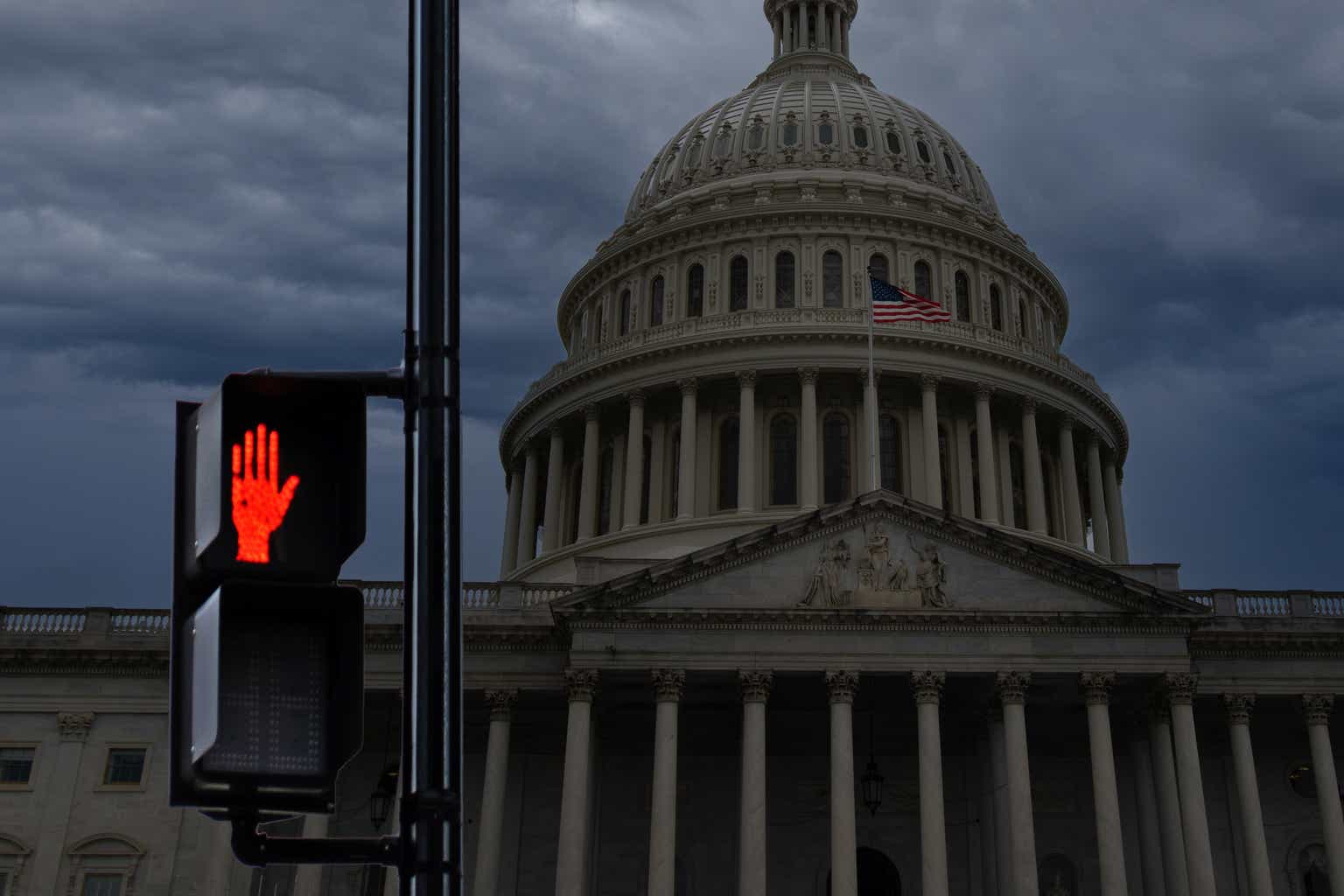By James Knightley & Padhraic Garvey, CFA
Another headwind for growth
We’ve written a lot about the headwinds facing the US economy as we enter the fourth quarter. The exhaustion of pandemic era accrued savings for many households is likely to be a very important theme, as will the ongoing tightening of lending conditions amidst 20+ year high borrowing costs. Then there are higher energy costs that are eating into spending power, plus the restart of student loan repayments that will intensify the squeeze on household finances in the months ahead. Now added to that list is the high probability of a government shutdown, which will see government work disrupted, hundreds of thousands of government workers and private sector vendors not being paid and economic data flow impeded.
With Congress deadlocked over an agreement to provide funding for the start of the fiscal year on 1 October, we have the very real threat that government agencies start shutting down imminently. This has happened on 14 occasions since 1981 with some shutdowns lasting just a day or two while the longest stretched for 34 days between December 2018 and January 2019. The typical duration is around one to two weeks, after which politicians come to their senses amid an electoral backlash and agree a funding package.
With government workers receiving backpay, the economic fallout is usually fairly limited, with the Office of Management and Budget estimating the 16-day government shutdown in 2013 crimped third quarter 2013 GDP by roughly 0.3 percentage points.
A long shutdown could mean the economy shrinks in the fourth quarter
However, tensions appear higher this time, and the potential for an extended period of brinkmanship, given the proximity of next year’s Presidential election, means that we need to be prepared for a shutdown that could stretch to several weeks. While there is a consensus on the need to narrow government spending deficits, the Democrats want to achieve it via tax increases and the Republicans want it to be realised via large spending cuts. Funding for Ukraine is also a point of tension. Adding to the challenge is the Republican Party’s narrow majority in the House and hardliners unwillingness (so far) to contemplate concessions.
With no allocated funding, we could see upwards of 800,000 workers furloughed – sent home without pay – while hundreds of thousands of other ‘essential’ federal government workers, including Homeland Security, prison staff, military and legal workers would be required to continue working despite not being paid. Absenteeism could be an issue, with the number of workers calling in sick typically rising when they are not being paid. National parks and museums may close in many instances and businesses surrounding them would inevitably be impacted, while contractors employed by the federal government will also see payments being delayed or lost completely. Consumer and business sentiment is hurt, and spending inevitably weakens.
The ready reckoner typically knocks 0.1-0.2pp off quarterly annualised GDP growth for every week the shutdown drags on, but the economy makes perhaps halfback when there is an agreement and back pay is returned. In an extreme example of it lasting a couple of months with agreement resolved by early December, we could be talking a dent to GDP growth nearly a full percentage point. Given consensus expectations are only 0.4% for fourth quarter annualised growth, this would run the very real risk of a negative GDP print for the quarter.
Economic weakness and an absence of data means the Fed is finished hiking
Such an outcome would weaken the justification for the final Federal Reserve interest rate hike officials are forecasting for either the November or December FOMC meeting. But even if a shutdown is briefer, it will have the potential to disrupt data flow that will damage the visibility of the Federal Reserve. The October jobs report looks very vulnerable given the surveys are completed the week of the 12th, while CPI may also be impacted. No data is the worst case, but even if we do get the reports published, there will be question about markets over quality and reliability.
Given the lack of clarity on the state of the economy, it too would strengthen the case for the Fed holding interest rates steady again in November. This would give more time for the economic slowdown we anticipate to emerge and with core inflation likely to continue moderating, makes it all the more likely that the Fed’s hiking cycle is already over.
Here’s how a government shutdown might impact financial markets
The first thing to note is this is different from the debt ceiling debacle that struck some months back. A key element then centred on the risk that the US Treasury could run out of cash and not be in a position to make coupon and redemption payments on government debt, which in turn risked a technical default and potential significant instability on financial markets. In the extreme, it could have taken the system down. It was also possible back then that parts of the government could have been shut down to help prioritise the servicing of the debt. In the event, these extremes did not occur, as the debt ceiling was eventually suspended (albeit a tad too close to potential default for comfort).
The government shutdown that we are talking about here is different, at least in terms of its impact on Treasuries. The Treasury can continue to issue debt to raise cash, so there is no risk to the payment of interest or redemption payments on government debt. Hence, there is no risk of default on the debt. The important nuance here is the Treasury has the cash. It’s just that they don’t have a legal right to spend it beyond the end of September. For spending to continue unfettered into October, the appropriate spending bill(s) need to be passed by Congress. Only the parts of government impacted by the specific spending bills are impacted, but that is wide enough to cause considerable pain to many government employees or social security recipients.
The impact of a shutdown of some parts of government on financial markets is mostly centred on the dampening effect it has on economic activity. As a standalone issue, this should place downward pressure on Treasury yields. And the degree of severity would depend on how long the (partial) government shutdown lasts. There is also the possibility that risk assets could fret as an element of macro uncertainty is thrown into the equation. That too would likely push cash into bonds and money market funds (and out of risk assets). Importantly, though, there is no material incremental default risk for Treasuries, and so the financial system should not come under pressure.
There is a technical dimension to this too. To the extent that the Treasury continues to issue on bond markets, and then spends less of the cash raised, there is a tightening of underlying liquidity conditions. This can act as a force of upside to ultra-short-term rates. It should not be significant, but at the margin acts as something of a counterweight to the downward pressure on (longer tenor) market rates. But it should not be a dominating influence. Either way, there should not be a huge impact, provided it does not get out of hand in terms of longevity of any (partial) government shutdown.
Content Disclaimer
This publication has been prepared by ING solely for information purposes irrespective of a particular user’s means, financial situation or investment objectives. The information does not constitute investment recommendation, and nor is it investment, legal or tax advice or an offer or solicitation to purchase or sell any financial instrument. Read more
Original Post
Read the full article here




